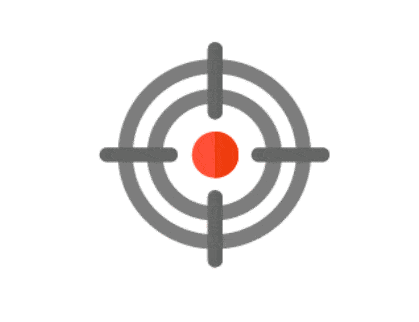US FDA approves only triple-combination tablet with Jardiance for adults with type 2 diabetes
[caption id="attachment_9277" align="aligncenter" width="747"] Press Release[/caption]
Press Release[/caption]
 Press Release[/caption]
Press Release[/caption]
RIDGEFIELD, Conn., and?INDIANAPOLIS,?Jan. 27, 2020?/PRNewswire/ --?The U.S. Food and Drug Administration (FDA) has approved Trijardy? XR (empagliflozin/linagliptin/metformin hydrochloride extended release tablets) to lower blood sugar in adults with type 2 diabetes,?along with diet and exercise. Trijardy XR provides three type 2 diabetes medicines in one pill, including Jardiance??(empagliflozin), Tradjenta??(linagliptin) and metformin hydrochloride extended release. Trijardy XR is marketed by?Boehringer Ingelheim Pharmaceuticals, Inc.?and?Eli Lilly and Company(NYSE: LLY).
"Many adults living with type 2 diabetes who are already on a treatment plan including multiple medications still struggle to keep their blood sugar under control, and may require additional agents to reach their A1C targets," said?Ralph DeFronzo, M.D., professor and diabetes division chief, UT Health San Antonio. "Adding new medicines to an individual's plan can be challenging for some, which is why new treatment options that can help improve blood sugar without the burden of an increased pill count are important. In addition, type 2 diabetes is a complex disease that often requires the use of multiple antidiabetic medications to improve glycemic control. Having three different diabetes medications in a single tablet is an important advance in diabetes treatment."
In the U.S., both Jardiance and Tradjenta are once-daily tablets used along with diet and exercise to lower blood sugar in adults with type 2 diabetes. Jardiance is also approved to reduce the risk of cardiovascular death in adults with type 2 diabetes who have known cardiovascular disease. Jardiance is not for people with type 1 diabetes or for people with diabetic ketoacidosis (increased ketones in the blood or urine). Tradjenta is not for people with type 1 diabetes or for the treatment of diabetic ketoacidosis. Tradjenta has not been studied in people with a history of pancreatitis and it is unknown if using Tradjenta increases the risk of developing pancreatitis in these people.
"We are proud to offer Trijardy XR as a new once-daily option combining three well-established medicines, including an extended-release version of metformin, the most commonly prescribed initial treatment for type 2 diabetes, Jardiance, the most prescribed SGLT2 inhibitor, and Tradjenta, the only single-dose DPP-4 inhibitor," said?Mohamed Eid, M.D., M.P.H., M.H.A., vice president,?Clinical Development & Medical Affairs, Cardio-Metabolism & Respiratory Medicine,?Boehringer Ingelheim Pharmaceuticals, Inc.?"We believe Trijardy XR has the potential to help adults with type 2 diabetes conveniently manage their treatment, especially those who are taking other medications and working on the necessary lifestyle changes."
Trijardy XR is not recommended for people with type 1 diabetes or diabetic ketoacidosis (increased ketones in the blood or urine). Trijardy XR has not been studied in patients with a history of pancreatitis. It is unknown whether patients with a history of pancreatitis are at an increased risk for the development of pancreatitis while using Trijardy XR. The labeling for Trijardy XR contains a warning for lactic acidosis, a rare but serious complication that can occur due to metformin accumulation, and is common to all products containing metformin.
The?FDA?approval of Trijardy XR is based on two randomized open-label trials that assessed the bioequivalence of empagliflozin, linagliptin and metformin hydrochloride extended release fixed-dose combination tablets and their individual components in healthy adults. The safety profile of Trijardy XR was found to be consistent with its individual components.
"The approval of Trijardy XR reflects our commitment to the diabetes community and to innovation that addresses evolving needs," said?Jeff Emmick, M.D. Ph.D., vice president, Product Development, Lilly. "We developed Trijardy XR because many people with type 2 diabetes need help managing this complex condition without adding more pills to their treatment plan. We look forward to making this new option available soon."
Trijardy XR is not for people who have severe kidney problems, end stage renal disease, or are on dialysis, have a serious condition called metabolic acidosis or diabetic ketoacidosis (increased ketones in the blood or urine), or are allergic to Jardiance, Tradjenta, metformin, or any of the ingredients in Trijardy XR. There have been postmarketing reports of acute pancreatitis, including fatal pancreatitis, in patients taking linagliptin, a component of Trijardy XR. Take careful notice of potential signs and symptoms of pancreatitis. If pancreatitis is suspected, promptly discontinue Trijardy XR and initiate appropriate management. It is unknown whether patients with a history of pancreatitis are at increased risk for the development of pancreatitis while using Trijardy XR.
Trijardy XR will be available in four different dosages, including: 5 mg empagliflozin/2.5 mg linagliptin/1000 mg metformin HCl extended-release; 10 mg empagliflozin/5 mg linagliptin/1000 mg metformin HCl extended-release; 12.5 mg empagliflozin/2.5 mg linagliptin/1000 mg metformin HCl extended-release; and 25 mg empagliflozin/5 mg linagliptin/1000 mg metformin HCl extended-release.
About Cardiorenal Metabolic Conditions
Cardiorenal metabolic conditions are a group of interconnected disorders affecting the heart, kidneys and endocrine system. In aggregate, these conditions are the leading cause of deaths worldwide, accounting for up to 20 million deaths annually. Conditions within this group include coronary artery disease, heart failure, chronic kidney disease and type 2 diabetes, among many others.
Emerging science on the link between the cardiorenal and metabolic systems supports taking a multidisciplinary approach toward diagnostic, preventive and therapeutic strategies for people living with these conditions. We remain committed to developing treatments with broad cardiorenal metabolic effects, which may help improve outcomes for people with serious chronic conditions such as these.
What is TRIJARDY XR?
TRIJARDY XR?is a prescription medicine that contains 3 diabetes medicines, empagliflozin (JARDIANCE), linagliptin (TRADJENTA), and metformin hydrochloride.?TRIJARDY XR?can be used along with diet and exercise to lower blood sugar in adults with type 2 diabetes, and in adults with type 2 diabetes who have known cardiovascular disease when empagliflozin (JARDIANCE), one of the medicines in?TRIJARDY XR, is needed to reduce the risk of cardiovascular death.
TRIJARDY XR?is not for people with type 1 diabetes, or for people with diabetic ketoacidosis (increased ketones in the blood or urine).
If you have had pancreatitis (inflammation of the pancreas) in the past, it is not known if you have a higher chance of getting pancreatitis while you take?TRIJARDY XR.
IMPORTANT SAFETY INFORMATION
Serious side effects can happen in people taking TRIJARDY XR, including:
Lactic acidosis (a buildup of lactic acid in the blood). Metformin hydrochloride, one of the medicines in TRIJARDY XR, can cause lactic acidosis, a rare but serious condition that can cause death. Lactic acidosis is a medical emergency and must be treated in a hospital.
Stop taking TRIJARDY XR and call your doctor right away or go to the nearest hospital emergency room if you get any of the following symptoms of lactic acidosis:?feel very weak and tired, have unusual muscle pain, have trouble breathing, have stomach or intestinal problems with nausea and vomiting, or diarrhea, feel sleepy or sleep longer than usual, feel cold in your arms and legs, feel dizzy or lightheaded, or have a slow or irregular heartbeat.
You have a higher chance of getting lactic acidosis with TRIJARDY XR if you:?have moderate to severe kidney problems; have liver problems; drink alcohol very often, or drink a lot of alcohol in the short term ("binge" drinking); get dehydrated (lose a large amount of body fluids); have x-ray tests that use injectable dye; have surgery; have congestive heart failure; have a heart attack, severe infection, or stroke, or are 65 years of age or older.
Inflammation of the pancreas (pancreatitis)?is another serious side effect that can happen to people taking?TRIJARDY XR. Pancreatitis may be severe and lead to death.?Before you start taking TRIJARDY XR?tell your doctor if you have ever had pancreatitis, a history of alcoholism, gallstones, or high triglyceride levels.
Stop taking?TRIJARDY XR?and call your doctor right away if you have pain in your stomach area (abdomen) that is severe and will not go away. The pain may be felt going from your abdomen through to your back. The pain may happen with or without vomiting. These may be symptoms of pancreatitis.
Heart failure?means your heart does not pump blood well enough.?Before you start taking TRIJARDY XR, tell your doctor if you have ever had heart failure or have problems with your kidneys. Contact your doctor right away if you have any of the following symptoms: increasing shortness of breath or trouble breathing, especially when you lie down; swelling or fluid retention, especially in the feet, ankles, or legs; an unusually fast increase in weight or unusual tiredness. These may be symptoms of heart failure.
Do not take TRIJARDY XR if you:
- have severe kidney problems, end stage renal disease, or are on dialysis
- have a condition called metabolic acidosis or diabetic ketoacidosis (increased ketones in the blood or urine)
- are allergic to empagliflozin, linagliptin, metformin, or any of the ingredients in?TRIJARDY XR.
- nausea
- vomiting
- stomach-area (abdominal) pain
- tiredness
- trouble breathing
- have moderate to severe kidney problems
- have liver problems
- have heart problems, including congestive heart failure
- are 65 years of age or older
- have a history of infection of the vagina or penis
- have a history of urinary tract infection or problems with urination
- are going to have surgery. Your doctor may stop your?TRIJARDY XR?before you have surgery. Talk to your doctor if you are having surgery about when to stop taking?TRIJARDY XR?and when to start it again
- are eating less or there is a change in your diet
- have or have had problems with your pancreas, including pancreatitis or surgery on your pancreas
- drink alcohol very often, or drink a lot of alcohol in the short term ("binge" drinking)
- are going to get an injection of dye or contrast agents for an x-ray procedure.?TRIJARDY XR?may need to be stopped for a short time. Talk to your doctor about when you should stop?TRIJARDY XR?and when you should start it again
- have type 1 diabetes.?TRIJARDY XR?should not be used in people with type 1 diabetes
- have low levels of vitamin B12?in your blood
- are pregnant or plan to become pregnant.?TRIJARDY XR?may harm your unborn baby. Tell your doctor right away if you become pregnant while taking?TRIJARDY XR
- are breastfeeding or plan to breastfeed.?TRIJARDY XR?may pass into your breast milk and may harm your baby. Do not breastfeed while taking?TRIJARDY XR
- are a woman who has not gone through menopause (premenopausal), who does not have periods regularly or at all.?TRIJARDY XR?can cause the release of an egg from an ovary in a woman. This can increase your chance of getting pregnant
- Dehydration. JARDIANCE?can cause some people to have dehydration (the loss of body water and salt). Dehydration may cause you to feel dizzy, faint, light-headed, or weak, especially when you stand up.
You may?be at?a higher?risk?of?dehydration?if you:
- have low blood pressure
- take medicines to lower your blood pressure, including water pills (diuretics)
- are on a low salt diet
- have kidney problems
- are 65 years of age or older.
- Vaginal yeast infection.?Women who take JARDIANCE may get vaginal yeast infections. Talk to your doctor if you experience vaginal odor, white or yellowish vaginal discharge (discharge may be lumpy or look like cottage cheese), and/or vaginal itching.
- Yeast infection of the penis.?Men who take JARDIANCE may get a yeast infection of the skin around the penis, especially uncircumcised males and those with chronic infections. Talk to your doctor if you experience redness, itching or swelling of the penis, rash of the penis, foul smelling discharge from the penis, and/or pain in the skin around penis.
- Ketoacidosis (increased ketones in your blood or urine).?Ketoacidosis is a serious condition and may need to be treated in the hospital. Ketoacidosis may lead to death. Ketoacidosis occurs in people with type 1 diabetes and can also occur in people with type 2 diabetes taking JARDIANCE, even if blood sugar is less than 250 mg/dL.?Stop taking JARDIANCE and call your doctor right away if you get any of the following symptoms,?and if possible, check for ketones in your urine:
-
-
- nausea
- vomiting
- stomach-area (abdominal) pain
- tiredness
- trouble breathing
-
-
- Kidney problems.?Sudden kidney injury has happened in people taking JARDIANCE. Talk to your doctor right away if you reduce the amount you eat or drink, or if you lose liquids; for example, from vomiting, diarrhea, or being in the sun too long.
- Serious urinary tract infections.?Serious urinary tract infections can occur in people taking JARDIANCE and may lead to hospitalization. Tell your doctor if you have symptoms of a urinary tract infection, such as a burning feeling when passing urine, a need to urinate often or right away, pain in the lower part of your stomach or pelvis, or blood in the urine. Sometimes people also may have a fever, back pain, nausea or vomiting.
- Low blood sugar?(hypoglycemia): If you take JARDIANCE with another medicine that can cause low blood sugar, such as sulfonylurea or insulin, your risk of low blood sugar is higher. The dose of your sulfonylurea or insulin may need to be lowered. Symptoms of low blood sugar may include:
- headache
- drowsiness
- weakness
- dizziness
- confusion
- irritability
- hunger
- fast heartbeat
- sweating
- shaking or feeling jittery
- Low blood sugar?(hypoglycemia): If you take JARDIANCE with another medicine that can cause low blood sugar, such as sulfonylurea or insulin, your risk of low blood sugar is higher. The dose of your sulfonylurea or insulin may need to be lowered. Symptoms of low blood sugar may include:
- Necrotizing fasciitis. A rare but serious bacterial infection that causes damage to the tissue under the skin in the area between and around your anus and genitals (perineum).?This bacterial infection has happened in women and men who take JARDIANCE, and may lead to hospitalization, multiple surgeries, and death.?Seek medical attention immediately if you have fever or are feeling very weak, tired or uncomfortable (malaise), and you develop any of the following symptoms in the area between and around your anus and genitals: pain or tenderness, swelling, and redness of skin (erythema).
- Allergic (hypersensitivity) reactions. Symptoms of serious allergic reactions to JARDIANCE may include:
- swelling of your face, lips, throat and other areas of your skin
- difficulty with swallowing or breathing
- raised, red areas on your skin (hives)
If?you have any of these symptoms, stop taking JARDIANCE and contact your doctor or go to the nearest emergency room right away.
- Increased fats in your blood (cholesterol).
Before taking JARDIANCE, tell?your?doctor?if?you:
- have kidney problems. Your doctor may do blood tests to check your kidneys before and during your treatment with JARDIANCE
- have liver problems
- have a history of urinary tract infections or problems with urination
- are going to have surgery
- are eating less due to illness, surgery, or a change in your diet
- have or have had problems with your pancreas, including pancreatitis or surgery on your pancreas
- drink alcohol very often, or drink a lot of alcohol in the short term ("binge" drinking)
- have any other medical conditions
- are pregnant or plan to become pregnant. JARDIANCE may harm your unborn baby. Tell your doctor right away if you become pregnant during treatment with JARDIANCE.
- are breastfeeding or are planning to breastfeed. JARDIANCE may pass into your breast milk and may harm your baby. Do not breastfeed while taking JARDIANCE.Tell?your?doctor?about?all?the medicines?you take,?including?prescription?and over-the-counter medicines, vitamins, and?herbal supplements.?Especially?tell your?doctor?if?you take water?pills (diuretics)?or?medicines?that?can?lower?your?blood?sugar,?such as?insulin.
- other medicines that can lower your blood sugar. If you take TRADJENTA with another medicine that can cause low blood sugar, such as sulfonylurea or insulin, your risk of getting low blood sugar is higher. The dose of your sulfonylurea or insulin may need to be lowered while you take TRADJENTA.
- rifampin (Rifadin?, Rimactane?, Rifater?, Rifamate?),* an antibiotic that is used to treat tuberculosis.
- Inflammation of the pancreas (pancreatitis).
- Low blood sugar (hypoglycemia), especially if you take TRADJENTA with another medicine that can cause low blood sugar. Signs and symptoms of low blood sugar may include headache, drowsiness, weakness, dizziness, confusion, irritability, hunger, fast heartbeat, sweating, or feeling jittery.
- Allergic (hypersensitivity) reactions can happen after your first dose or up to 3 months after starting TRADJENTA. Symptoms may include swelling of your face, lips, throat, and other areas on your skin; difficulty with swallowing or breathing; raised, red areas on your skin (hives); skin rash, itching, flaking, or peeling.
- Joint pain. Some people who take medicines called dipeptidyl peptidase-4 (DPP-4) inhibitors like TRADJENTA, may develop joint pain that can be severe. Call your doctor if you have severe joint pain.
- Skin Reaction. Some people who take medicines called DPP-4 inhibitors like TRADJENTA, may develop a skin re
Share this article on WhatsApp, LinkedIn and Twitter
X


Incisive News in 3 Shots.
Contact Us
- First Floor, B-66, Sector 63 Noida, Uttar Pradesh, INDIA - 201301
- +91-120 428 0707
- connect@pharmashots.com
- Newsletter
Our Information
Copyright © 2025 PharmaShots - All Rights Reserved.
Modal title
Modal body text goes here.



